This article was co-authored by Isabelle Garson. Isabelle Garson is a Social Media Expert based in the San Francisco Bay Area. With 10 years of experience, she works in social media strategy and content production. She specializes in music and cannabis marketing and has worked with international touring artists. Isabelle studied graphic design at the Academy of Art University. Additionally, she holds a certification from Sprinklr Research Analyst Pro.
There are 7 references cited in this article, which can be found at the bottom of the page.
This article has been viewed 52,374 times.
Lots of people go gluten free for many different reasons. Just because you are gluten free does not mean that you have to abandon all bread-based goods, including cakes and pastries. Gluten free flours are always an option, and they will allow you to enjoy baked goods once again. They are actually a blend of different types of flours; this makes them suitable for baking. They can be tricky to find, however, so why not make your own?
Ingredients
- 4¼ cups (640 grams) brown rice flour
- 4¼ cups (640 grams) white rice flour
- 4¼ cups (640 grams) sweet rice flour
- 4½ cups (565 grams) tapioca flour/starch
- 2½ tablespoons xanthan gum (optional but recommended)
- 1¼ (125 grams) sorghum flour
- 1 cup (150 grams) white or brown rice flour
- ¾ cup (95 grams) tapioca starch/flour
- 4 teaspoons tapioca starch/flour
- ½ teaspoon cornstarch or potato starch
- 4¾ cups (515 grams) white rice flour
- 1⅔ cups (250 grams) brown rice flour
- 1⅓ cups (165 grams) potato starch
- ¾ cup (95 grams) tapioca flour/tapioca starch
- ¼ cup (30 grams) nonfat dry milk powder
Steps
Making All-Purpose Flour
-
1Pour all four flours into a large bowl. If you can't find tapioca flour, you can use tapioca starch instead; it's the same thing. If you'd like to make this blend using smaller amount, simply use equal parts of all four flours, then add ¼ part of tapioca flour/starch.
- If you are allergic to tapioca, use potato starch instead. Do not use potato flour; it's not the same thing.[4]
-
2Add the xanthan gum as a gluten replacement and to allow for better binding. The trouble with gluten-free flour is that it is gluten-free. This means that when you use it instead of regular flour in a recipe, you might get slightly different results. Adding xanthan gum is not completely necessary, but it will help bind your ingredients and give you better results.[5] [6]Advertisement
-
3Blend the ingredients together well with a whisk. Do not skimp on the blending; if your flours are not well-blended, your baked goods will not turn out right. It will take 3 to 5 minutes of whisking.[7]
-
4Store the flour in an air-tight container. Depending on the recipe, you can use it as a direct substitute for regular flour. You may have to use a little more/less flour depending on the recipe however. It works great in just about any baked good, including breads, cakes, crepes, muffins, and even waffles.[8]
Making Self-Rising Flour
-
1Pour all of the ingredients into a large bowl. The ingredients in this flour will give you a similar result to what regular, self-rising flour gives you.
-
2Stir everything together with a whisk until it is well blended, about 3 to 5 minutes. Don't rush through this step. If your flours and starches aren't well-blended, your recipes won't turn out right.
-
3Store the blended flour in a large container. When you are done, transfer everything into an air-tight container. Keep it in a cool dark place.
-
4Use the flour in your baked goods. This blend is ideal for tings like cakes, cupcakes, muffins, and scones—basically, anything that uses baking powder as a leavener.[9]
Making Baking Flour
-
1Pour the white rice flour, brown rice flour, potato starch, and tapioca starch into a large bowl. Make sure that you are using potato starch and not potato flour. If you can't find any tapioca starch, however, you can use tapioca flour; it's the same thing.
- Brown rice is a great is a great base if you're wanting to make your own cake flour.
-
2Add the nonfat dry milk powder. This is the secret ingredient that will help improve the structure of your gluten-free cakes, breads, cookies, muffins, etc. The added sugars will also create a browning reaction and lend your baked goods a more complex flavor.[10]
-
3Combine the ingredients with a whisk until everything is well combined. Don't get lazy on the mixing! If you don't mix things well enough, your baked goods will have poor results. It will take about 3 to 5 minutes of good mixing.
-
4Pour the blended flour into an air-tight container and store it in the fridge for up to 3 months.[11]
Trying Different Mixes
-
1Make a simple, all-purpose blend using three different types of flours. Combine the ingredients listen below, and use as a substitute for anything that calls for all-purpose flour.
- 3 cups (450 grams) brown or white rice flour
- 1 cup (125 grams) potato starch
- ½ cup (65 grams) tapioca flour/starch
-
2Make a blend using soy flour if you can't use potato starch. If you need a simple flour, but can't use potato starch, you can use soy flour instead. Gather the ingredients listed below, mix them well, and use the flour in your recipes.
- ½ cup (75 grams) brown rice flour
- ¼ cup (25 grams) soy flour
- ¼ cup (30 grams) tapioca flour/starch
-
3Try a coconut flour blend. The coconut flour gives this blend a slightly sweet flavor, making it ideal for cakes an pastries. Mix the ingredients below, and store them in an air-tight container.[12]
- 1 cup (150 grams) white rice flour
- 1 cup (100 grams) oat flour
- 1 cup (100 grams) coconut flour
- 1 cup (125 grams) tapioca flour/starch
- ¼ cup (30 grams) cornstarch
- 3½ teaspoons xanthan gum
-
4Try a gluten free Bisquick blend. Bisquick is used to make pancakes and waffles, but the store bought kind contains gluten. You can make your own by mixing the ingredients below:[13]
- 2 cups (300 grams) white rice flour
- 1¼ cup (125 grams) coconut flour
- 1 cup (125 grams) dry milk powder
- ¼ to ½ cup (55 to 115 grams) granulated sugar
- ½ cup (65 grams) cornstarch
- 1 tablespoon baking powder
- 1 tsp baking soda
- ½ tsp salt
-
5Add some xanthan gum or guar gum to make your recipes more effective. Gluten helps bind ingredients together. Unfortunately, when you use gluten-free flour, you lose this important property. Fortunately, xantham gum and guar gum are great substitutes for gluten, and adding them will make your blended flours more effective. How much xanthan gum or guar gum you add depends on what you are making. Each of the measurements below are for 1 cup (100 grams) of flour. If you are using more flour, use more xanthan gum or guar gum.[14]
- If you are making bars, cakes, cookies, muffins, or quick-breads, add ½ teaspoon of xanthan gum or guar gum.
- If you are making yeast bread or baked items containing yeast, add 1 teaspoon of xanthan gum or guar gum.
- If you are making pizza dough or pie crust, add ½ teaspoon of xanthan gum or guar gum.
-
6Know that you can use single, non-gluten flours instead of blends when you are cooking. Just because a recipe, such as a sauce, calls for flour does not necessarily mean that you have to whip up a batch of blended flour. You can always substitute any of the flours below:[15]
- Use arrowroot, amaranth, and tapioca flour to thicken roux, sauces, and pie filling.
- Use chickpea flour, besan, and garbanzo bean flour to bind burgers and meatballs.
- Substitute corn masa to make tortillas.
- Try corn flour and millet flour when breading meat.
- Use sweet rice flour to thicken gravy and sauces, and make noodles.
Community Q&A
-
QuestionCould I add tapioca flour to boiled grains (e.g. kamut, barley, buckwheat, steel-cut oats) and boiled legumes (e.g. lentils, adzuki, black beans) to successfully remove gluten?
 HawaiifunsunCommunity AnswerBarley has gluten, so that wouldn't work. Tapioca flour does not have gluten, so it won't remove gluten, but it would just not add anymore of it than what's already there.
HawaiifunsunCommunity AnswerBarley has gluten, so that wouldn't work. Tapioca flour does not have gluten, so it won't remove gluten, but it would just not add anymore of it than what's already there.
Warnings
- Not every blend will work in every recipe. Some blends are better for some recipes than others.⧼thumbs_response⧽
- You won't be able to use every blend as a direct substitute for flour. Sometimes, you may have to use a little bit more/less of your blended flour.⧼thumbs_response⧽
Things You'll Need
- Large bowl
- Whisk
- Air-tight container
Expert Interview
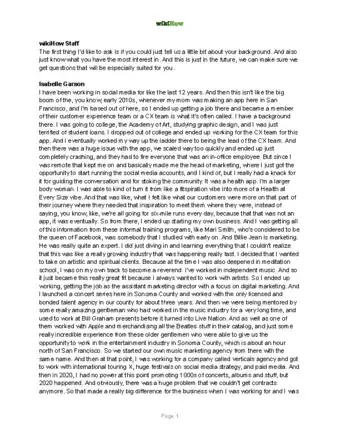
Thanks for reading our article! If you'd like to learn more about cooking gluten free dishes, check out our in-depth interview with Isabelle Garson.
References
- ↑ http://alittleinsanity.com/all-purpose-gluten-free-flour-mix-recipe/
- ↑ http://www.faveglutenfreerecipes.com/Gluten-Free-Diet-Information/Gluten-Free-Flour-Substitutions
- ↑ https://www.cooksillustrated.com/recipes/7854-americas-test-kitchen-gluten-free-flour-blend
- ↑ http://alittleinsanity.com/all-purpose-gluten-free-flour-mix-recipe/
- ↑ http://alittleinsanity.com/all-purpose-gluten-free-flour-mix-recipe/
- ↑ http://minimalistbaker.com/diy-gluten-free-flour-blend/
- ↑ http://alittleinsanity.com/all-purpose-gluten-free-flour-mix-recipe/
- ↑ http://minimalistbaker.com/diy-gluten-free-flour-blend/
- ↑ http://www.faveglutenfreerecipes.com/Gluten-Free-Diet-Information/Gluten-Free-Flour-Substitutions
- ↑ https://www.cooksillustrated.com/recipes/7854-americas-test-kitchen-gluten-free-flour-blend
- ↑ https://www.cooksillustrated.com/recipes/7854-americas-test-kitchen-gluten-free-flour-blend
- ↑ https://flippindelicious.com/gf-supplies-and-flours
- ↑ http://blessherheartyall.com/one-minute-gluten-free-bisquick-mix
- ↑ http://www.faveglutenfreerecipes.com/Gluten-Free-Diet-Information/Gluten-Free-Flour-Substitutions
- ↑ http://dish.allrecipes.com/gluten-free-flours-and-recipes
- ↑ http://dish.allrecipes.com/gluten-free-flours-and-recipes
About This Article
To make gluten free all-purpose flour, start by pouring brown rice flour, white rice flour, sweet rice flour, and tapioca flour into a large bowl. Next, add xanthan gum as a gluten replacement and to allow for better binding. Then, use a whisk to blend the ingredients together. After 3-5 minutes of mixing, transfer your flour mix to an air-tight container. You can use your gluten free all-purpose flour as a substitute for regular flour. To learn how to make self-rising gluten free flour, keep reading!
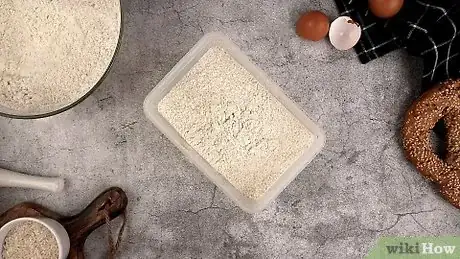
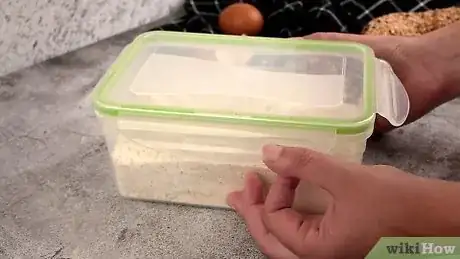
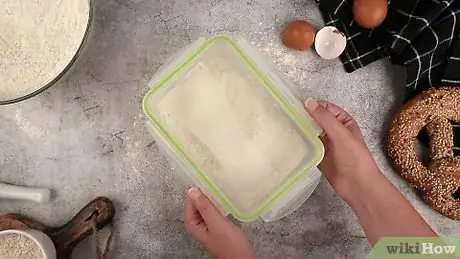
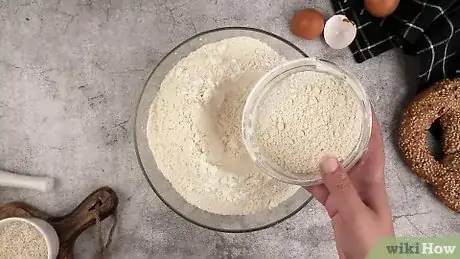
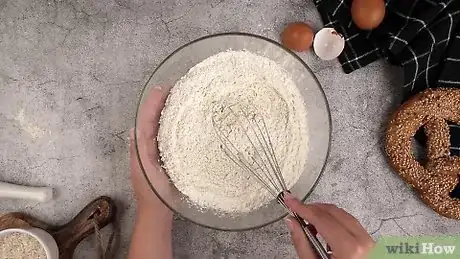

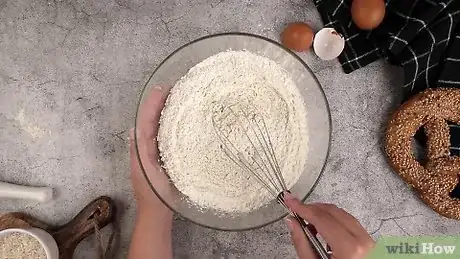

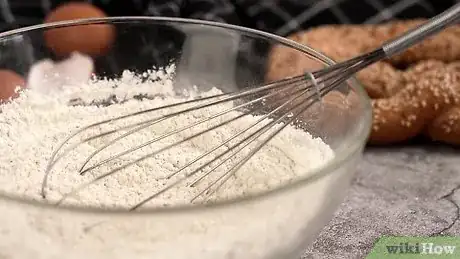

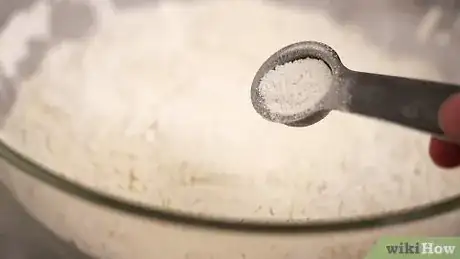












































Medical Disclaimer
The content of this article is not intended to be a substitute for professional medical advice, examination, diagnosis, or treatment. You should always contact your doctor or other qualified healthcare professional before starting, changing, or stopping any kind of health treatment.
Read More...